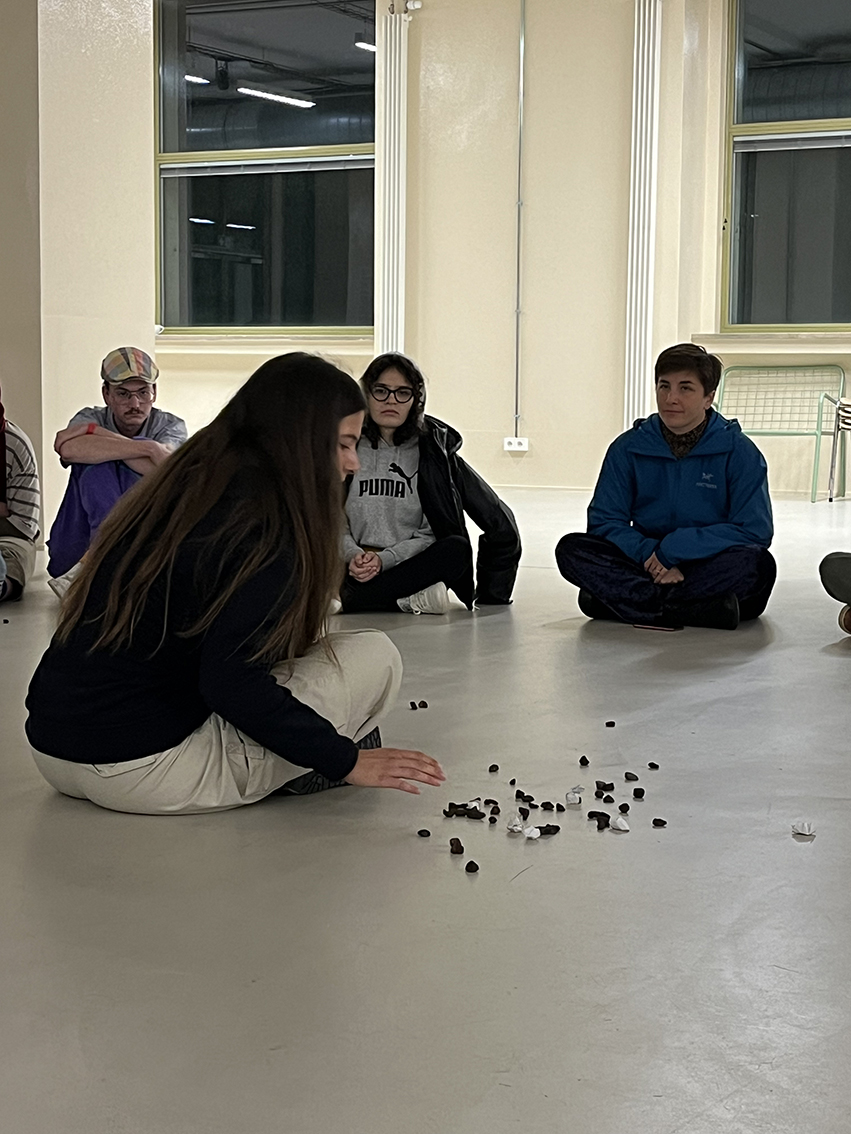Performing objects
Download the methods
To download the methods, click here
Target group
No. of pax
Environment
Time needed
Materials
Selected real-life objects
Objective/aim
The aim of this practice is to create visual movement scenes on a certain topic, inspired by objects that either do or could come from a real-life situation connected to that topic. For example, our situation was migrants crossing the Mediterranean sea, so we used objects we imagined migrants might take with them on such a journey (e.g. a water bottle, a sweater, etc.).
Step by step instructions
Step 1
The objects are assembled together (at least one object per participant). 5 min
Step 2
Participants observe the objects and each selects one they feel inspired by or drawn to. 5 min
Step 3
Participants are invited to position themselves in space with their chosen object. Then the facilitator begins a guided visualisation, leading participants from observing their object to finding a way to embody it, e.g. putting their body into a position or form that resembles the object, whatever that means to them. 10 min
Step 4
Once the participants have embodied their objects, the visualisation continues with the story of the objects (in our case: boarding a boat, crossing the sea, experiencing a storm and capsising, floating until the objects are washed ashore). As the story progresses, participants are asked to enact the events, e.g. to explore how their embodied objects might move and react to various moments in the narrative. 15 min
Step 5
Refinement. Each participant presents their object and movement. If needed, the story can be repeated to develop a more fixed group choreography 10-30 min
Step 6
Perform the final version of the story without verbal narration, using only the participants’ movement choreography inspired by the story. If a public presentation is the final goal, Step 5 can be repeated several times. 10 min
Tips for the trainer
This is a relatively advanced exercise, recommended only after some prior training with the group, so that a sense of trust and safety has already been established.
It is a poetic method for presenting selected topics, which can vary widely.
If the topic is ‘heavy’ or emotionally charged, a feedback session is recommended after Step 4. During this session, the facilitator invites participants to share their thoughts about the exercise: whether they find this form of expression meaningful and satisfying, and whether they feel comfortable performing it, or if it is emotionally challenging.
Alternative
If participants are comfortable with the exercise, verbal material can also be introduced into the movement (e.g. what would the objects say? how would they feel in the situation?), in order to strengthen the scene and its potential message. These instructions would be included in Step 4.
Comment
Source
This exercise was derived and adapted from street theatre training with the group KUD Ljud: https://www.ljud.si/slo/en/about-us-2/


